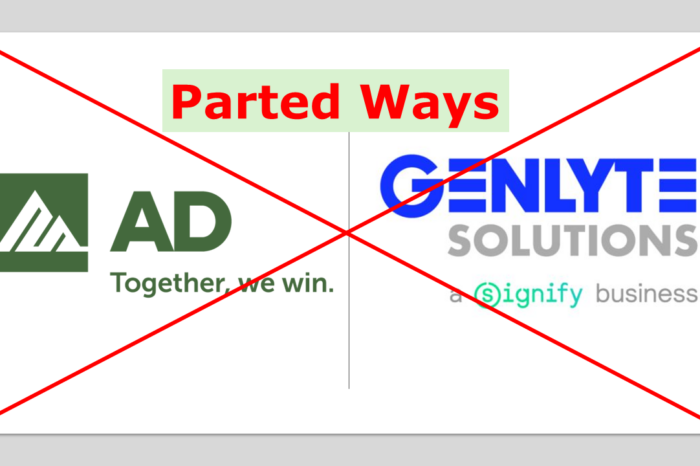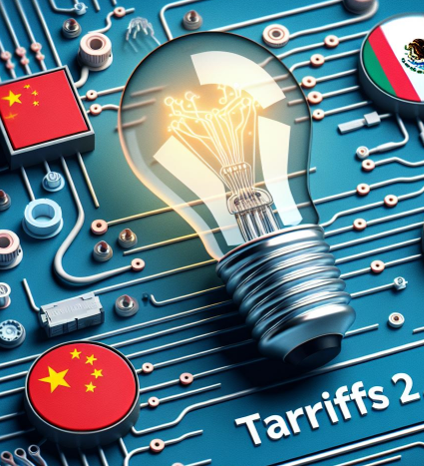The future of utility rebates could be “fungible”
 Many electrical and lighting distributors have devoted resources to marketing, selling and managing utility rebates to support their customers and as a differentiator to earning lighting retrofit projects. Frequently utility rebates are used to support LED sales. The rationale essentially has been “LEDs are expensive. Utilities will help subsidize to drive down cost to generate energy savings which essentially help them reduce the need for building new power generation capabilities. And it’s essential for a distributor to understand these initiatives, factor them into ROI calculations and provide the recovery services as a value-added service to earn the lighting business.”
Many electrical and lighting distributors have devoted resources to marketing, selling and managing utility rebates to support their customers and as a differentiator to earning lighting retrofit projects. Frequently utility rebates are used to support LED sales. The rationale essentially has been “LEDs are expensive. Utilities will help subsidize to drive down cost to generate energy savings which essentially help them reduce the need for building new power generation capabilities. And it’s essential for a distributor to understand these initiatives, factor them into ROI calculations and provide the recovery services as a value-added service to earn the lighting business.”
And we used the word “fungible” to mean “being of such nature or kind as to be freely exchangeable or replaceable, in whole or in part, for another of like nature or kind.” In other words, utility rebates are issued at the “whim” of the utility and can be changed, or canceled, without notice.
The rationale hasn’t been wrong, however, the continued decline of the cost of LEDs could alter the utility rebate program equation.
Chris Cloutier, who has extensive experience with utility rebate programs and the utility mindset, shared some thoughts:
A few months ago we discussed the idea of mid-stream/distributor-focused incentive programs that utility incentive programs are increasingly beginning to explore. I wanted to expand on that topic.
Based on some recent work I just completed, the gap between how these utility programs tend to be run – offering buyers a rebate for purchasing an efficient product – and what they want to do – capture as much energy savings as possible by helping to expedite changes in the market – is huge and glaring.
The model most utility programs use is several decades old. It is based around the idea that efficient products are more expensive than inefficient products and by helping buy-down, if not remove, the price premium for these products, consumers will be more apt to buy them. This is a good idea, but it is insufficient now in the age of the LED revolution.
Rebates are set and established usually in 12 month increments, but given the continual downward pressure on price on these LED products, programs are frequently seeing some product prices reduced to near $0. As the utility programs are evaluated on a number of metrics, including cost-effectiveness tests, when the price on these products is continually dropping, the justification for the rebate diminishes. Some programs are now trying to do more frequent adjustments to their rebate levels but these added changes add complexity, cost and create uncertainty. In addition, it doesn’t change the underlying problem – the model of paying people to buy a product is insufficient for what the utility programs are trying to do.
The best example of this is data. We discussed this before, how the utility programs need data to understand the impact they are having on the market. Normally, the data they get is the number of rebates and the amount of rebate dollars spent. So, if one year a utility provides a mythical 10,000 rebates and spends $100,000 on rebates for LED tubes, they want to increase those numbers. In the next year, they provide 13,000 rebates and spend $130,000 on rebates. This is a great success, right? The rebate program increased 30%! Theoretically they saved 30% more energy!
Unfortunately, it is not that simple and I am not even that good at math.
All they know is the numerator. They know that their program grew 30%, but they don’t know what the market did nor the what the energy savings were. In this age of near light-speed change in the LED market, assuming that their market only grew 30% is probably not a fair inference. But it’s this lack of understanding that is beginning to dog the utility programs. How can they determine what impact their program had if they don’t know what the broader market did? And, how do they determine what the broader market did?
This is where distributors come in. Their performance is a much better indicator and understanding of the market. But, most utility programs don’t effectively engage with the distributors. They run rebate programs.
So, what does the next generation of these programs look like? How will distributors best be able to participate in them? How will they benefit electrical and lighting distributors?
Which this then means, the “gravy train” of utility rebates may not last, everywhere, indefinitely. While NEMRA has data on overall shipments of different types of lamps and manufacturers theoretically have shipments by state, distributors and retailers are the only ones who have sales information by state (and type of fixture). This then leads to the thought process that rebates could be paid through distributors plus a handling fee for participating in a rebate program. This is similar to how grocery stores have been compensated for handling coupons (at one point they got 8 cents for every coupon they handled and it could be a significant revenue stream for grocery stores.)
If the model changed, what would you like to see it change to? Are you confident that your utility company’s rebate program will last for the next 5 years? Are you selling retrofit lighting primarily based on rebates? If so, what happens if they go away? Would you participate in a different structure?
Thoughts?






















